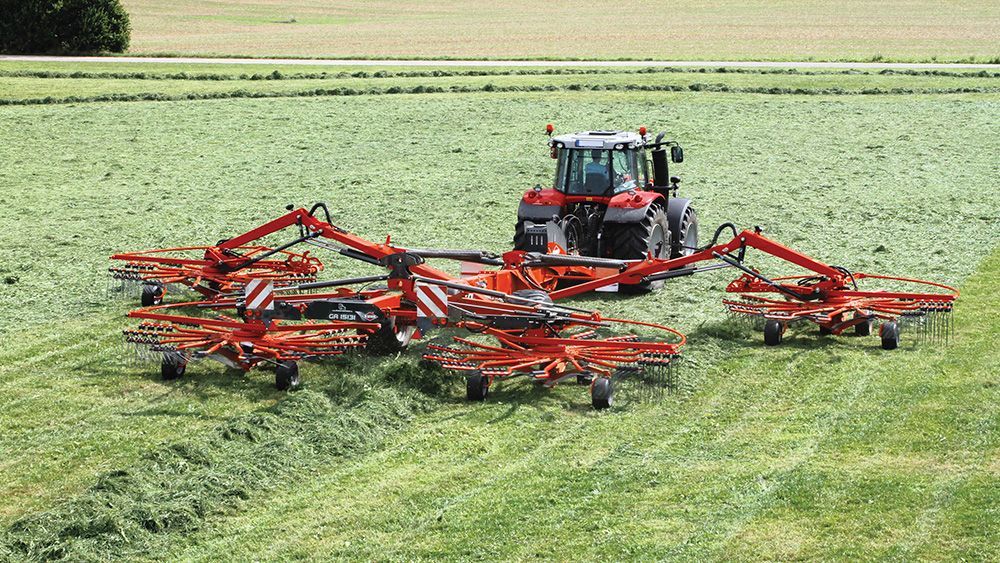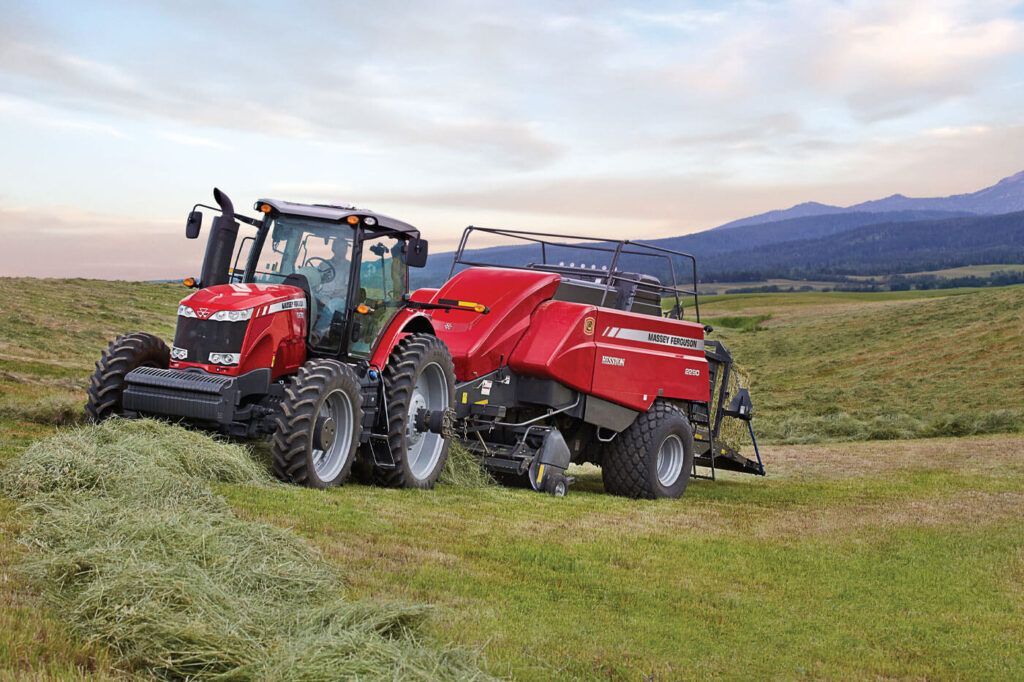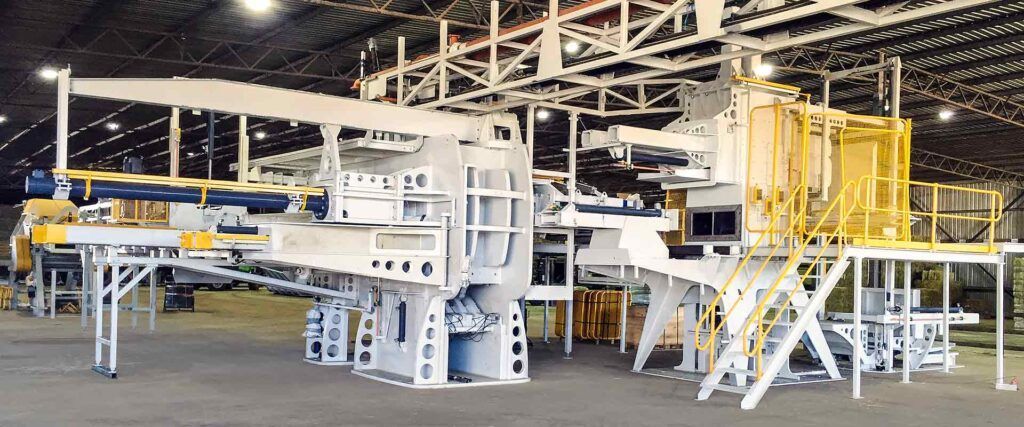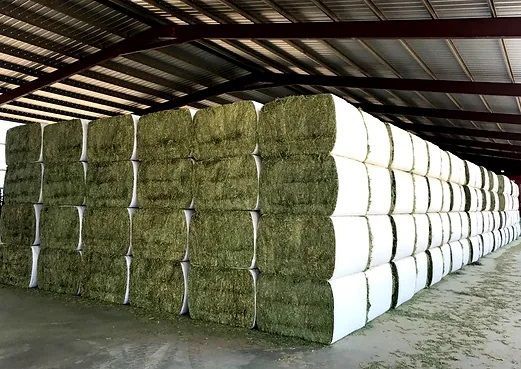Basis Commodities – Australian Hay Update – Monday 29th May

In this month’s report, we will explain the steps for bringing oaten hay to export from Australia, so our readers have a good understanding of the processes involved. Sowing for the 2023/24 Australian oaten hay season in Australia is complete. Based on weather forecasts it appears to be a drier growing season ahead which will be very good for oaten hay production. The coming months will tell the story, but for now, please enjoy this month’s report on growing, harvesting, baling, and exporting oaten hay from Australia to the international dairy industry.
Step 1: Land Preparation and Sowing
The first step in growing oaten hay is to prepare the land. The land must be ploughed, levelled, and treated with Urea (lime) and fertilisers to optimise PH and soil growing conditions. Once the land is prepared, the seed is sown using specialised machinery and then rolled to ensure uniformity of seed penetration and land surface. This creates benefits for both growing and when it is time to harvest. The best time for sowing oaten hay in Australia is from mid-March to early May.
Step 2: Irrigation and Weed Control
95% of the growing area in Australia is reliant on rainfall with the other 5% under irrigation. After the seed is sown, paddocks with irrigation capability are watered regularly to ensure the crop has enough moisture, while timely rainfall will be needed for dry area cropping. Herbicide applications may also be necessary to prevent weeds from competing with oaten hay for water, nutrients, and sunlight. This is usually achieved through the use of chemical herbicides and other weed control methods. One of the strong benefits of oaten hay production however is the natural weed control the crop offers as harvest for the hay itself is done prior to seed maturity which will also ensure that certain weed varieties are also cut before they can seed. This process denies the growth cycle of competing weeds, reduces farmer input costs and produces a more natural crop without the use of chemical.
Step 3: Cutting and Drying
Once the crop is ready for harvest, a specialised mower is used where the cut height is typically set to 2-3 inches (5-7cm) from ground level so the hay can rest on top of the stubble without touching the soil. The cutting is done when the hay has reached a specific stage of maturity, which is determined by the moisture content. Hay fibre lengths cut in the field are typically anywhere from 20 to 30cm. Once cut, the hay rests on the stubble and is left to dry in the field anywhere from 7-12 days, until it has reached the required moisture content of between 12% to 18%. Export hay is typically shipped with a Max moisture of 14%. At certain stages of drying, the hay is flicked and turned using a Tedder, a specialised machine that teases the hay to ensure drying is uniformed.

Step 4: Raking and Baling
Once the hay is at an appropriate moisture content, it is raked into rows using a windrower and then baled into large rectangular bales using a baler. Bailing preserves the quality of the hay and makes it easier to transport and store. Hay compression in high density balers can create significant compaction where weights can be anywhere from 500-700kgs. The denser the bale the more efficient transport and storage will be.


Step 5: Storing and Exporting
Bales are then collected and stored in a shed until they are ready to be processed for export. Prior to exporting, the hay is tested for quality, including the moisture content, nutrient content, and the presence of weeds or pests. If the hay meets the required export standards and destination country requirements, it is loaded onto trucks and transported to an export processing facility they are reprocessed in a hay press to uniformed packages in accordance with a customer’s requirement. Fibre lengths are reduced to 10-15cm so the product can be easily integrated to a Total Mixed Ration (TMR) or suitable for a mouthful size for livestock to eat directly from the export bale.

There are many processes involved in bringing high quality Australian Oaten Hay to the international dairy industry. Through the growing, harvesting, baling and hay press phases, the Department of Agriculture monitor the strict protocols and compliance processes to ensure the integrity of the Australian Oaten Hay industry is maintained and that our export customers receive the best possible product to support their dairy herds input requirements.
Please contact Nader Hassan or Steven Foote, who are available to support any fodder needs for the season.
Steven Foote
Sydney, Australia
M:
0408 308 908
E:
steven@basiscommodities.com
Nader Hassan
Dubai, UAE
M:
+971566915688
E:
nader@basiscommodities.com
Sign up for our mailing list.
If you’d like to be added to our mailing list and receive these updates direct to your inbox each month, email info@basiscommodities.com with your name and email address.
The post Basis Commodities – Australian Hay Update – Monday 29th May appeared first on Basis Commodities.
Share This Article
Other articles you may like
Sign Up
Enter your email address below to sign up to the Basis Commodities newsletter.








